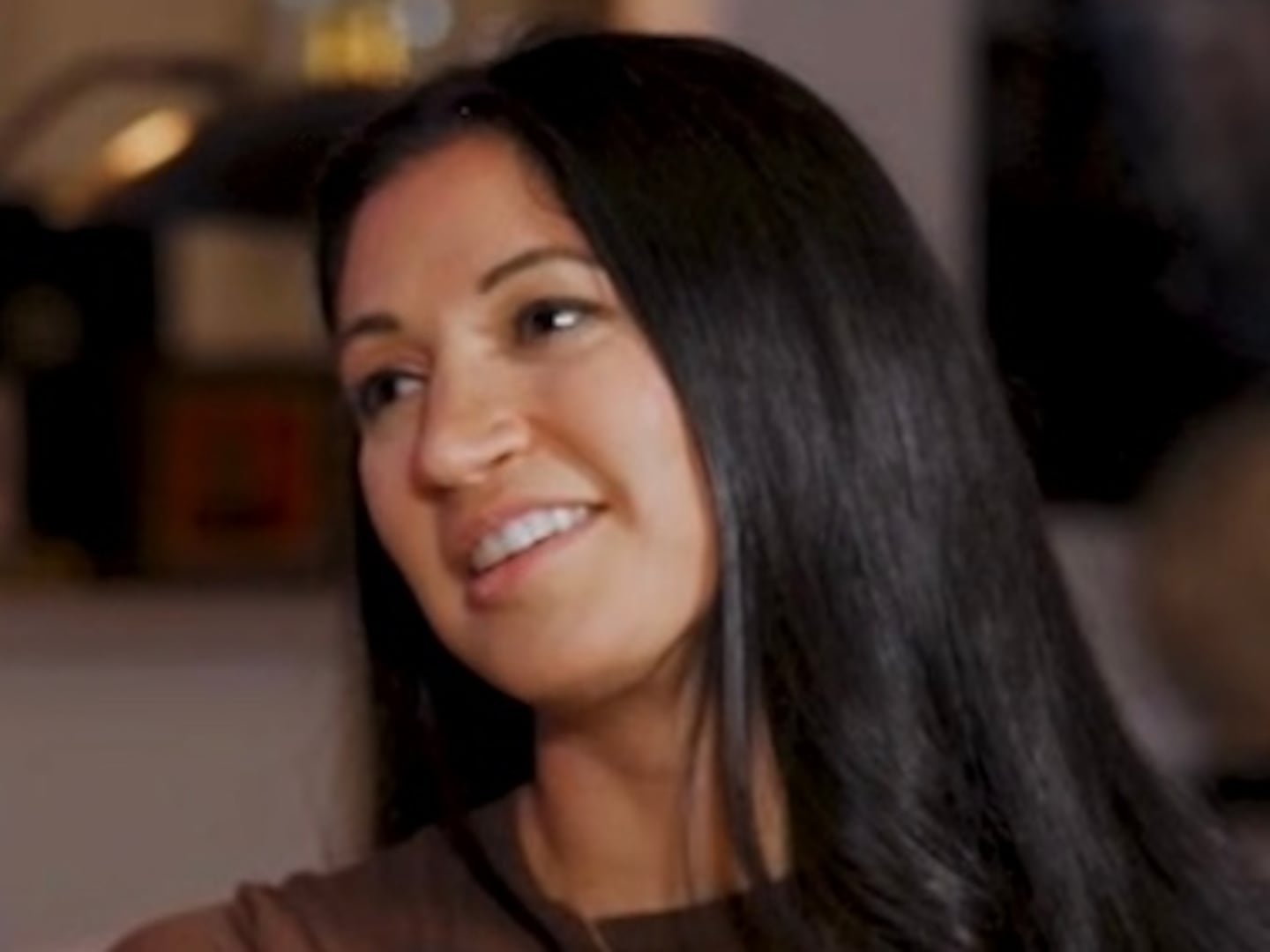
To think of writing about Ferran Adrià and El Bulli is to think about trudging along in the footsteps of 2,500 other food journalists, according to the Barcelona restaurant’s Web site (elbulli.com). The restaurant, the man, the cuisine, and the science have received more attention than anything of their ilk, and with good reason: Adrià is a genius (check). His food is revolutionary (check). The inventiveness of what Chef Adrià and his staff accomplish in their kitchen is unrivaled, and it is generally accepted that he has blown apart the concept of what food is, and how it can be prepared like no one else (check). So what else is there to say?
“It was a kitchen, filled with people pierced and tattooed with spiked hair. Everyone was so delighted with what they were doing. The pastry chef was positively impish in his delight.”
Well, there’s a great story from Jody Adams, chef-owner at Rialto in Boston, about how she scored a reservation at El Bulli. One of the great chefs of Boston, and of our time, Jody is intelligent, talented, and her food has garnered all kinds of awards.
Out of the blue, Jody received an email in November from the Physics and Applied Science Department at Harvard, inviting her to two events, both of which were given equal weight in the letter. One was a chocolate lecture for kids. The other was a lecture by Ferran Adrià. “You may have heard of him,” the email said.
Jody immediately RSVPed, went to the presentation—standing room only, four overflow rooms with satellite televisions filled to capacity—and was wowed. The only oddity was that in the lengthy presentation, delivered in Catalan through an interpreter, Adrià never once used the word “flavor.” He did, however, say he firmly believed that his work was going to transform everyday cuisine as we know it.
The next night, due to a family emergency, Jody wasn’t in the restaurant, but Adrià and his colleagues were, and by all accounts they were very impressed.
But the following night Jody was back in the kitchen, and a table in the private dining room requested her presence. She popped out, and it turned out to be a group of scientists who wanted to tell her about a fellow scientist they had just seen. Of course it was Adrià. All jazzed up, they talked about him, and lo and behold one of the women at the table had just secured a reservation at the El Bulli and had the fourth seat at the table open. She asked if Jody wanted to join them, and without missing a beat Jody said yes.
Jody called the woman the next day to offer her the out—after all, they had never met before, and Jody was being generous with the wine—but the invitation stuck. The woman had secured the reservation by talking about a science experiment she had been working on involving spicing, and one of the coveted tables was bestowed upon her.
At an International Culinary Institute conference in 2007, Jody had attended a talk with a collection of Spanish chefs who had been flown over, and was blown away. At that time, she returned to her restaurant and asked the team, “Should we be getting nitrous oxide and canisters? Should we be foaming?” The answer was no, and every time it was brought up, the consensus was it wasn’t Jody, it wasn’t Rialto.

But when Jody met up with her new friends in Barcelona, the night before the El Bulli meal, over a dinner of straightforward tapas like potatas bravas and fried peppers, they pressed her: “Why wouldn’t you do food like Ferran does?” And she had to admit, they had a point; she needed to really consider it. She didn’t have an answer, but she was going to look for one the next day.
The first point Jody makes is that it is critical that Ferran Adrià exists. It is crucial to push the envelope. You don’t have to fall in love with his way of cooking, but it is important to move forward. There are lots of parallels: Haute couture trickling down to Target is one of the best, if one of the most obvious.
Not only did Jody get a seat at the table, she also was invited into the kitchen of El Bulli. Jody is a smart cookie who has been at home in restaurant kitchens for 25 years. But she was nervous. She wrote an email: “What should I wear? Will I be observing or participating? Can I take pictures?” The answers: “Chef’s jacket, observing, no.”
Intrigued? So was I. The idea of getting a chef like Jody Adams’ first-person take on the back and the front of El Bulli sounded pretty damn good. So, a mere 24 hours after getting off the plane from Barcelona, she was kind enough to share her experience.
So you get there—what happens?
I thought I was to be there at 1, but of course I got stuck in traffic, and then lost. But as I was driving around in my tiny rental car in a nearby town, I saw a little hand-painted sign stuck into someone’s yard saying, “Roses (the town El Bulli is located in).” I even was given a map from a lovely, generous man when I stopped for directions, and managed to arrive at exactly 1.
Entering the town, there is a huge billboard for the restaurant saying “Best Chef, Best Restaurant, two million applications for 800 reservations.” I actually found myself thinking, am I up to the task? The road to the restaurant is very unassuming: There’s a very steep driveway, no place to park. I saw a young guy striding down with an armload of wild fennel. He clearly belonged there, so I followed him. I went to find David Lopez, who I had been corresponding with, and David said, “Oh, I’m so sorry, it was 3 o’clock, do you mind if you go away for a while?” but very kindly. I came back at 3 and was given an amazing, thorough tour of the restaurant and the kitchen. This is something that they do; clearly having guests, journalists in the restaurant at 3 is common. Everyone was incredibly gracious, friendly, open. I was taken into the kitchen and introduced to Ferran. He never spoke English, but his whole vibe was inviting, he bowed with his whole body, and through a translator I was welcomed and told to ask questions, stay as long as I liked. The sous chefs were amazing. It was definitely a male-dominated kitchen; about eight or so out of the 45 people in the kitchen were women…
Did it feel like other restaurant kitchens?
There is a lot of little detailed preparation for this work. There were no big piles of onions being chopped, no simmering stocks. It actually didn’t smell in that part of the kitchen. At one point, they were peeling truffles, but there was no aroma. But it never had the feel of being sterile, just very, very precise and clean. There were always a lot of little plastic containers being used, syringes, offset spatulas, paring knives, plastic wraps...things were being wrapped in plastic a lot. But people were smiling and tasting, sticking their fingers in things; people were bringing things to Ferran to taste over and over. He had a notebook the whole time, writing in it; apparently he tastes every night, makes adjustments all the time.
But really it was a kitchen, filled with people pierced and tattooed with spiked hair. Everyone was so delighted with what they were doing. The pastry chef, Matteo, was positively impish in his delight. “You’re going to be so surprised,” he said, and gave me a coconut sponge. I have no idea how they made it; it was coconut milk poofed into a sponge. In your mouth it evaporates, but because of the fat it has some structure to it, and was also slightly salted. During the whole meal, that was the most consistent thing, the intense, pure flavors. Not a combination of flavors, but a combination of texture and temperature plus a flavor.
But not a lot of savory smells wafting around?
They were drying rabbit ears, brains, kidneys, and tongues for one of the courses. Then, in one area of the kitchen, off to the side, the rest was being roasted, just like regular food, and it smelled great. But we were never served it!
What do you think it was for?
Maybe a family meal?
Willy Wonka and the Chocolate Factory or no?
Not Willy Wonka, not protecting their information. It was “taste this, look at this, we do this by adding this,” and so on. They start with the essence of flavor, so even though what you are seeing and experiencing is texture and temperature transformation, at its core Ferran has started with a flavor base that’s remarkable. It didn’t seem like mad science, except at one point a young woman was standing over a bowl of liquid nitrogen, rolling a balloon, and the smoke was billowing out from the bowl. That was wild. And she kept pulling her arm away from the bowl, and I did worry that she would burn herself.
And then you go change into your civvies and join your new friends for dinner, moving from the inner sanctum to the dining room.
It’s not a dining experience; it’s a different kind of experience. It’s a unique expression of textural and temperature change in food to delight. But overall my experience is that it is indeed a restaurant, though some have contended differently. The food and wine pairings are spot on, the dishes are beautiful. The difference was that the food is just wildly unexpected. So it isn’t about sitting down with friends and talking about anything other than what is right in front of you—Ferran wants for you to sit there and be completely absorbed by what’s going on on your plate.
How did the meal begin?
The first five or six courses had no utensils, you ate with your fingers, and courses come in rapid succession. Almost too fast, but this is intentional. We had 30 courses in five hours. People arrive, order a glass of wine, and they start bringing the welcome snacks. And there are the famous cocktails: sugar-cane sticks that have either been infused with mojito or caipirinha, stuck into a mound of shaved ice. The olives were unbelievable, maybe the best thing: olive puree surrounded by a sleeve of something that kept them together. Then a cold gin fizz with a warm lemon foam and peanuts with a hard thin shell outside and liquid peanut butter inside. Warm Parmesan crisps that I saw them making in the kitchen, Parmesan water—not exactly sure what that was—mixed with agar agar, spread into a sheet, dried, cut, and then baked at two different temperatures.
What else stands out in your mind?
Later we had a frozen coconut balloon, which was coconut milk frozen to the inside of a balloon, then the balloon peeled off. It looked like an ostrich egg, and it was served with a tiny bit of curry. But there were no ice crystals, because of the nitrogen, so it’s this amazing texture...the texture is like coconut, but then it melts in your mouth and disappears. One of the desserts was essentially a chocolate-dipped cherry. But the cherry is liquefied, frozen, with a cherry stem put into it, then dipped it into this incredibly dark chocolate. It had very little cocoa butter in it, so the center melts. There was a lot of that exploding your mouth stuff. The cherry was amazing and unbelievable.
What you admire about Ferran Adria and El Bulli, what aspects will you think about incorporating at Rialto, and what part of it isn’t for you?
There are techniques that definitely work and can be played with. We are always looking for contrast in our food, so the contrast comes from sugar to acid, salt to butter, temperature, texture...Ferran has just taken it to a new level. I’m always saying to the sous chefs that we need another texture on the plate, and maybe using something like agar agar can help in that transformation—that’s what I want to explore. Do I want to make little olive oil beads? That is pretty cool. They use two different chemicals: One chemical is mixed with the liquid, and then it is dripped from a syringe into another liquid, which causes a coating around that drop. I liked that.
Ferran is a genius, he’s rare. He has not an ounce of self-doubt in his whole being that I can see. He says he’s sad that it’s so hard to get a reservation at El Bulli. But he’s not that sad—the place is like an island.
At the end of the day, what brings me back to what I do again and again is bringing people around the table for conversation about something other than the food. That’s not what this experience was about. But there is that Dr. Doolittle push-pull animal that’s going on all the time—on one hand it’s extraordinary, and of course it should be happening, and he should be recognized for the innovator that he is. On the other hand, where does this fit in the grand scheme of things? It’s very elite, it’s not at all pervasive. It’s like haute couture. He believes he’s going to transform restaurant and home cuisines. The question is, how?
So, in summary?
The restaurant is hospitable, it’s warm, they are generous, the flavors are clean and fabulous. You don’t eat things and feel tested, like you’re being asked to figure out what you’re eating. You feel like you’re part of the in-crowd, you’re part of the club. There’s nothing spiky or nasty, but there is the feeling of the unobtainable. But to have gone, to have been in the kitchen, I feel incredibly privileged.
Katie Workman is the editor in chief and chief marketing officer of Cookstr.com, a Web site devoted to great, tested recipes from chefs and cookbook authors. Katie is on the board of City Harvest, and actively involved in Share Our Strength. She lives in New York City with her husband her two boys, ages 6 and 9.






